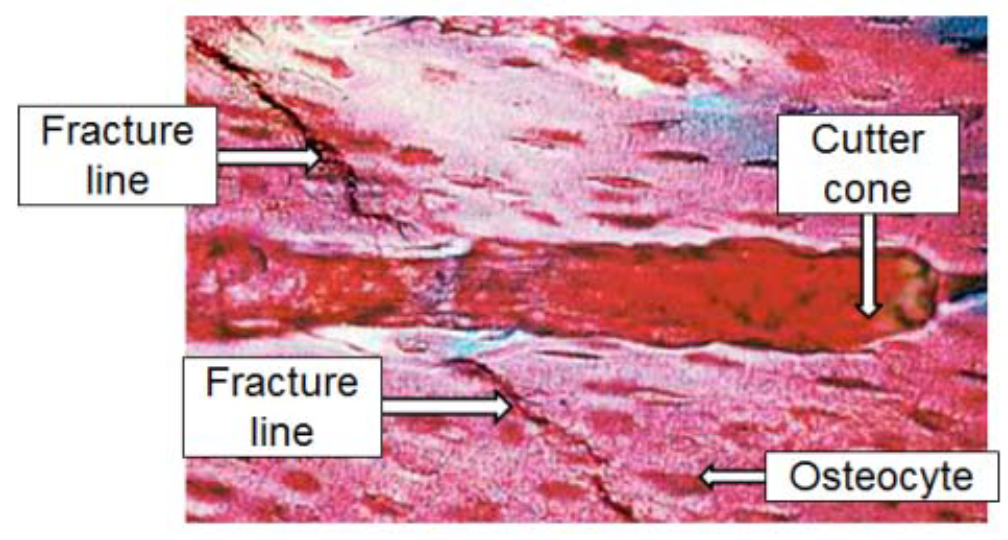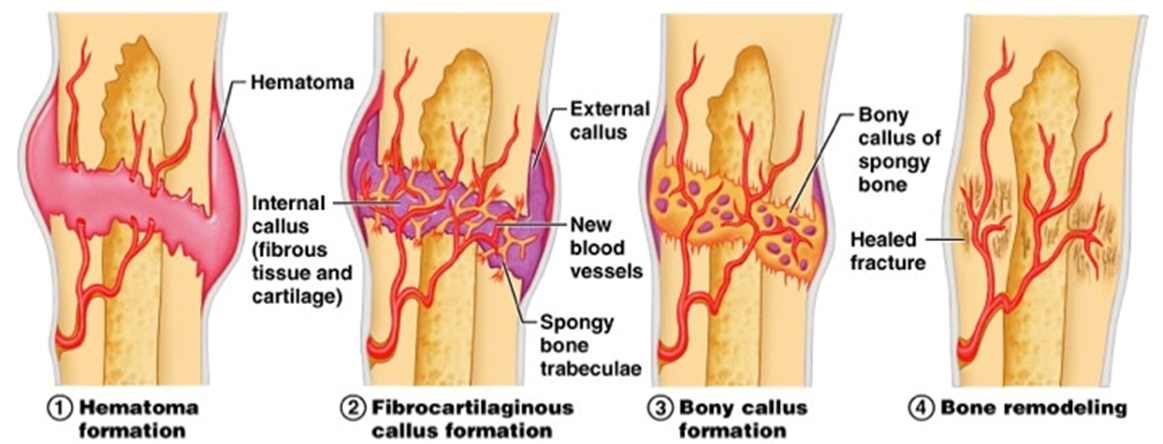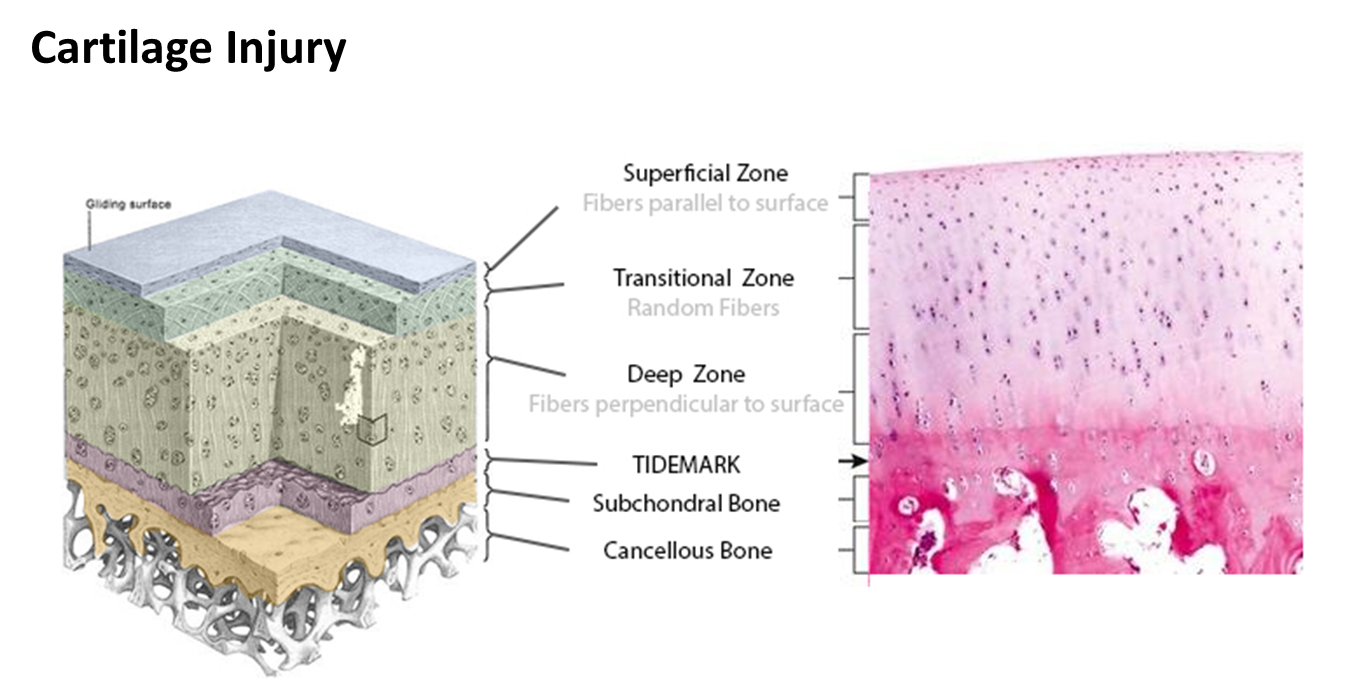Fractures and Bone Healing
1/9
There's no tags or description
Looks like no tags are added yet.
Name | Mastery | Learn | Test | Matching | Spaced |
|---|
No study sessions yet.
10 Terms
What provides the strength to a bone?
Hydroxyapatite provides bone strength
→ non-mineral collagen provides the structure to a bone
What are the common fracture patterns?
There are five fracture patterns
1) Transverse
→ breaking across
2) Compression
→ seen often in patients with osteopenia, resulting in a portion of the bone compressing onto another bone
3) Spiral
→ any force that twists
4) Oblique
→ being struck by something leading to a diagonal break
5) Avulsion
→ fleck of bone that is torn off with a ligament
Fractures can also be open or closed which indicates whether the bone has torn through the skin
What is the response of the body to a fracture
Fractures lead to a lack of structural support in a bone and disruption of vascularity
→ disrupts both sources of the bone (Periosteum providing 1/3 and Endosteum providing 2/3)
→ leads to a local and systemic inflammatory response
What is primary bone healing?

Primary (direct) - done by sticking the bone tightly together, restoring the bone to how it was
1) healing via the haversian system or through the basic constructional unit of the bone (osteon) of our cortical bone
→ osteocytes in the lacunae will communicate with other lacunae via canaliculi
→ osteoclasts create tunnels called cutting cones which allow for the formation of new haversian osteons
What is secondary bone healing?

Secondary Bone Healing has three major stages:
1) Inflammatory Stage
→ a hematoma forms creating a source of hematopoietic stem cells that secrete growth factors
→ Macrophages, Neutrophils, and Platelets release several cytokines and prostaglandins
→ Fibroblasts are recruited
2) Repair Stage
→ a callus forms that bridges one end of a bone to the other
→ the soft callus is converted to woven bone via endochondral ossification
→ type II collagen forms cartilage early on which is reformed into type I collagen later on (bone)
3) Remodeling Stage
→ hormones like parathyroid hormone is released which stimulates bone turnover
→ makes woven bone which is reorganized into lamellar bone
Why should you not take NSAIDs or Nicotine when you break a bone?
NSAID usage will lead to inhibition of COX-2 leading to a decrease of prostaglandins like runx-2/osterix which are necessary for differentiation of osteoblasts
Nicotine will inhibit growth of new blood vessels
→ other drugs that cause these sorts of issues are seizure meds and steroids
What is Wolff’s Law?
Bone will remodel in response to mechanical stress
→ inadequately moving or supporting the bone will lead to improper or failed to heal bone
Why should you not use bisphosphonates for a fracture?
Bisphosphonates inhibit osteoclast activity preventing remodeling which is necessary for bone healing
How is cartilage repaired?

Cartilage is subdivided above and below the tidemark which separates the uncalcified layers of cartilage from the calcified cartilage
1) Superficial laceration above the tidemark
→ leads to chondrocyte proliferation, but there is no healing because the cartilage is avascular above the tidemark
2) Deep Laceration below the tidemark
→ leads to fibrocartilage healing
→ production of type I collagen
What kind of collagen is used in ligament repair?
Type III collagen is used
→ the ligament and tendon are weakest at days 5-21 while healing